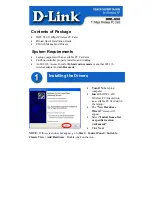
76 Calibration
Table 6-1. Equipment Required for Calibration
Equipment
Characteristics
Recommended Model
Shunts
0.1
Ω
@ 15 A, 0.04% @ 25 W
Guildline 9230/15
0.01
Ω
@ 100 A, 0.04% @ 100 W
Guildline 9230/100
0.001
Ω
@ 300 A, 0.04% @ 100 W
Guildline 9230/300
Voltmeter
dc accuracy of 0.01%, 6 digit readout
Agilent 3456A or equivalent
Power Supply
60 Vdc/l20 Adc minimum
PARD < 3 mV rms/30 mv pp
Agilent 6032A or Agilent 6035A and
Agilent 6031A, or equivalent
Controller
GPIB (IEEE-488)
Agilent BASIC (2.1 or higher)
Calibration Commands
The following calibration commands are required to calibrate the Electronic Load. They are used in the example program
included in this section. Refer to the Agilent Electronic Loads Programming Reference Guide for syntax requirements for
HPSL commands.
CALibration:[MODE] ON|OFF|1|0
Turns the calibration mode on or off.
CALibration:LEVel:HIGH <NRf>
Enters the actual high level value (measured by an external instrument) that corresponds to the present high level setting.
An error is generated if the high level value is not greater than the low level value. Both high and low CAL: LEV
commands must be sent before the constants are recalculated and stored in RAM.
CALibration:LEVel:LOW <NRf>
Enters the actual low level value (measured by an external instrument) that corresponds to the present low level setting. An
error is generated if the low level value is not less than the high level value. Both high and low CAL: LEV commands must
be sent before the constants are recalculated and stored in RAM.
CALibration:TLEVel[:HIGH] < NRf >
Enters the actual transient level value (measured by an external instrument) that corresponds to the present transient setting.
The low level value of the main DAC is used as the low point for the transient calibration. Note that for the middle and high
resistance ranges, the transient level is LOWER than the high level of the main DAC.
CALibration:MEASure:HIGH <NRf>
Enters the actual high level value (measured by an external instrument) that corresponds to the present high level setting.
The input signal must remain applied to the Electronic Load while this command is executed because the unit takes a
reading with the readback DAC to calibrate itself. An error is generated if the high level value is not greater than the low
level value. Both high and low CAL:MEAS commands must be sent before the constants are recalculated and stored in
RAM.
CALibration:MEASure:LOW <NRf>
Enters the actual low level value (measured by an external instrument) that corresponds to the present low level setting. The
input signal must remain applied to the Electronic Load while this command is executed because the unit takes a reading
with the readback DAC to calibrate itself. An error is generated if the low level value is not less than the high level value.
Both high and low CAL:MEAS commands must be sent before the constants are recalculated and stored in RAM.
Содержание 6050A
Страница 10: ......
Страница 14: ......
Страница 32: ......
Страница 46: ...46 Installation Figure 3 12 Local Sensing Figure 3 13 Remote Sensing...
Страница 47: ...Installation 47 Figure 3 14 Parallel Operation Figure 3 15 Zero Volt Loading...
Страница 48: ......
Страница 55: ...Local Operation 55 Figure 4 2 Recommended Programming Sequence...
Страница 64: ......
Страница 69: ...Remote Operation 69 Figure 5 1 Remote Programming Flowchart Sheet 1...
Страница 70: ...70 Remote Operation Figure 5 1 Remote Programming Flowchart Sheet 2...
Страница 74: ......
Страница 78: ...78 Calibration Figure 6 2 Calibration Flowchart for A Modules...
Страница 79: ...Calibration 79 Figure 6 2 Calibration Flowchart for A Modules continued...
Страница 80: ...80 Calibration Figure 6 2 Calibration Flowchart for A Modules continued...
Страница 85: ...Calibration 85 Figure 6 3 Calibration Flowchart for B Modules...
Страница 86: ...86 Calibration Figure 6 3 Calibration Flowchart for B Modules continued...
Страница 87: ...Calibration 87 Figure 6 3 Calibration Flowchart for B Modules continued...
















































